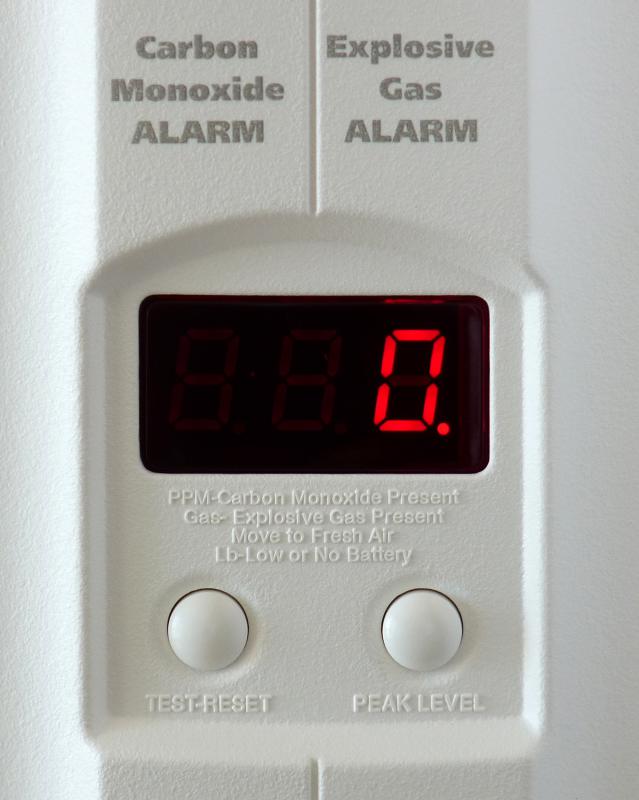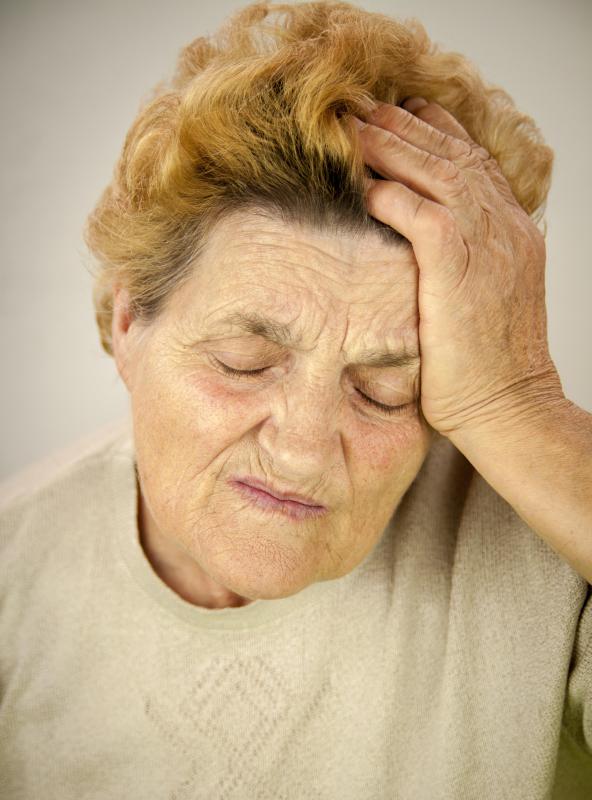At WiseGEEK, we're committed to delivering accurate, trustworthy information. Our expert-authored content is rigorously fact-checked and sourced from credible authorities. Discover how we uphold the highest standards in providing you with reliable knowledge.
What is Carbon Monoxide Poisoning?
Carbon monoxide poisoning is a medical condition caused by inhalation of carbon monoxide gas. People can die from this condition or experience long-term disabilities caused by damage to the brain and other organs. Causes can include improperly vented appliances, as well as occupational exposure, and the treatment is administration of pure oxygen to the patient. Treatment is usually provided in a hospital setting.
This gas has no color or odor, making it impossible for people to detect it. People inhaling carbon monoxide experience a displacement of oxygen in the body. The higher the carbon monoxide concentrations, the faster this occurs. As carbon monoxide poisoning sets in and cells die, people can experience headaches, confusion, depression, dizziness, and chest pains. Cells can start to die and patients can go into organ failure. Introducing pure oxygen will allow the patient to recover, although it cannot reverse any brain damage caused by carbon monoxide poisoning.

Chronic carbon monoxide poisoning happens slowly over time. People may feel depressed, experience memory loss, and undergo behavioral changes as a result of slow incremental damage. In the acute version of this condition, exposure to high volumes of carbon monoxide, as for example in an enclosed area with a running engine, cause rapid onset of organ damage. The patient will fall into a coma and die.

Prevention of carbon monoxide poisoning requires installing detectors to identify dangerous levels of the gas and taking steps to limit carbon monoxide in enclosed areas. Detectors are available from a number of sources and can plug directly into wall outlets. They alert with sounds and lights when dangerous conditions are present and can wake people up if there is a dangerously high carbon monoxide level in the home. Venting appliances correctly, keeping vents clean and clear, and making sure that appliances undergo regular maintenance so they burn fuel as efficiently as possible is also important.

Ventilation in spaces where carbon dioxide is produced is critical. Keeping a steady flow of air moving through the environment will keep levels of carbon monoxide low and make the space safer to work in. People like mechanics and other people who work with gasoline and diesel engines are at high risk of carbon monoxide poisoning in the winter months, when they may be tempted to work in closed environments because of cold and rainy weather. It's important to have monitors installed in workspaces and to have an adequate ventilation system in place for safety.
AS FEATURED ON:
AS FEATURED ON:

















Discuss this Article
Post your comments